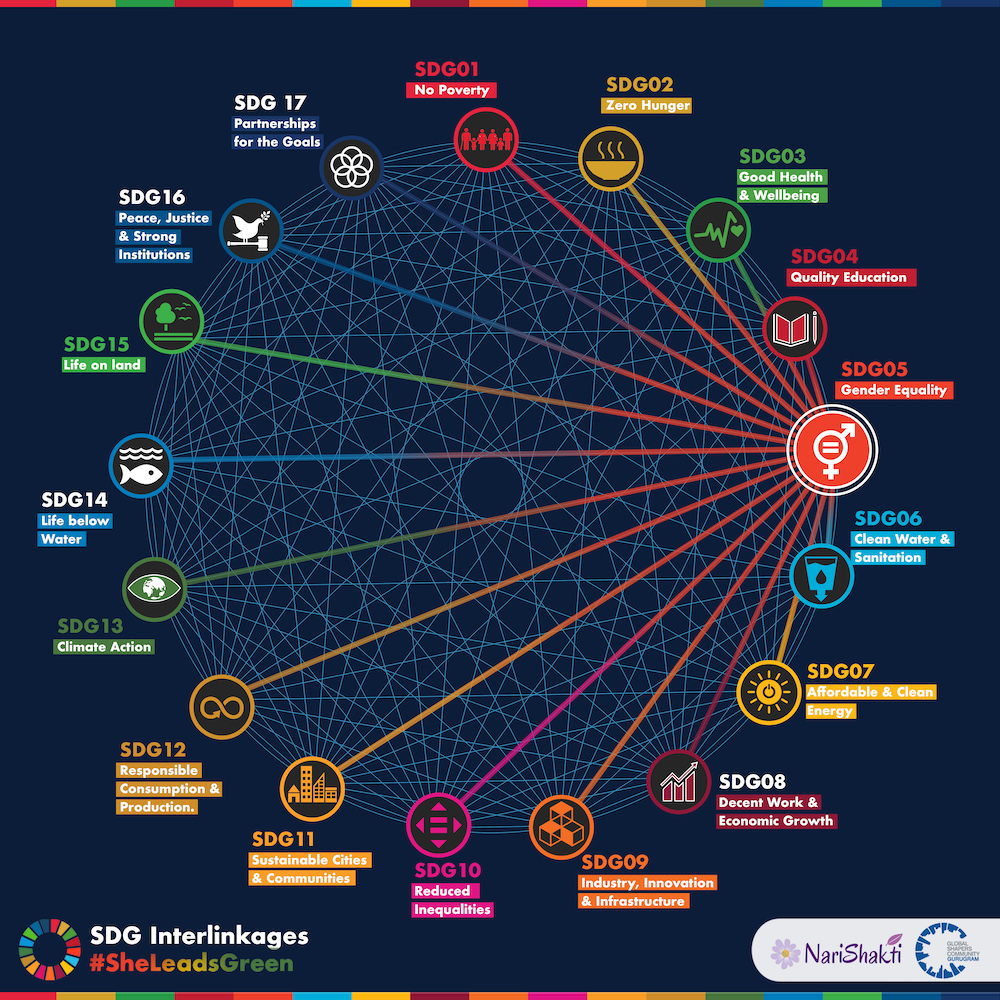
Introduction to SDG 5 interlinkages

Historically, women have faced the highest burden of impact during any crisis, given existing social structures and patriarchy prevalent in most societies. The pandemic has further widened the gender parity gap, and with the climate crisis at bay, the widening of this gap will exacerbate.
Multiple reports by leading academic institutions, research think tanks, multilateral institutions like the UN, and governments have highlighted the extreme vulnerabilities faced by women to climate change effects like displacement, food insecurity, and access to opportunities. Women are more likely to live in poverty than men, have more dependency on natural resources, and less access to basic human rights like limited access to mobility and land ownership, and face systematic violence that escalates during periods of instability. In fact, as per a United Nations Development Program (UNDP) report on gender and climate change, 80% of people displaced due to the climate crisis are women. Their role as primary caregivers further aggravates their vulnerability, given shortages of food and fuel during floods, droughts, and other calamities caused by climate change.
Looking at climate change and sustainability from a gender lens, we realize that achieving gender parity and building the resilience of women against climate change becomes critical when trying to mitigate the crisis and boost sustainability. In fact, building the resilience of women through capacity building and empowerment can have positive cascading effects on all other development objectives, elevating the prospects of achieving the other development objectives related to education, employment, climate action, and inclusive growth. As per a World Economic Forum article by a woman climate leader – “For practical and effective climate change mitigation, there is an uncontested need to unleash the knowledge and capability of women while developing policies, programs, and initiatives. Currently, women remain a largely untapped resource due to existing biases, including restricted land rights, lack of access to training, technology, and financial resources, and limited access to political decision-making due to under-representation. To find sustainable solutions, it is critical to recognize the important contributions of women as decision-makers, caretakers, stakeholders, experts, and educators across all sectors.”
Given the majority of climate change and sustainability risks affecting women more, there is empirical evidence that achieving gender equality and empowering women and girls(SDG 5), will be instrumental towards an effective, sustainable, and inclusive post-pandemic recovery and instigating climate resilience.
References:
- https://www.weforum.org/press/2021/03/pandemic-pushes-back-gender-parity-by-a-generation-report-finds
- https://www.un.org/womenwatch/feature/climate_change/downloads/Women_and_Climate_Change_Factsheet.pdf
- https://www.undp.org/content/dam/undp/library/gender/Gender%20and%20Environment/UNDP%20Linkages%20Gender%20and%20CC%20Policy%20Brief%201-WEB.pdf


